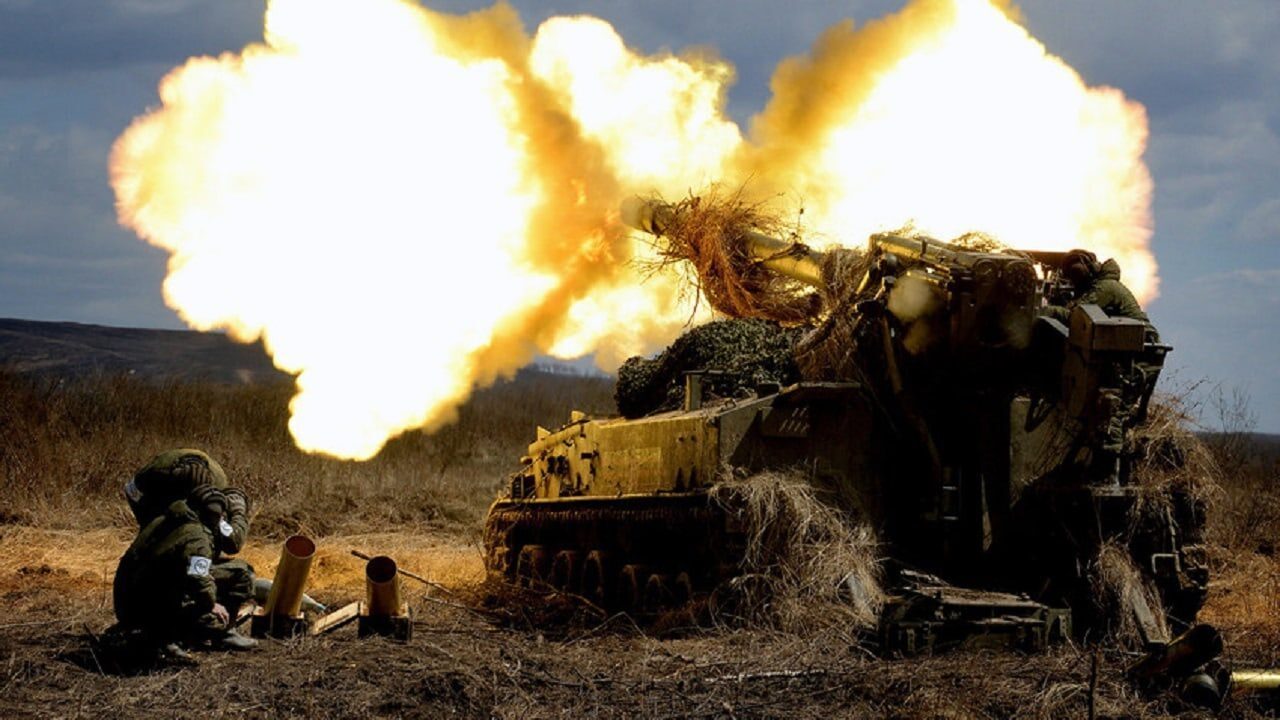On day 100 of the Russian invasion of Ukraine, the Russian military continues to push back the Ukrainian forces from the Donbas.
The Russian forces are making incremental gains in the region, while the Ukrainians are focusing most of their energy in their ongoing counteroffensive in the direction of Kherson, in the southeast.
Russian Casualties and Force Generation Issues
Although the rate of casualties has slowed down, the Russian military has still suffered devastating losses in Ukraine.
The Ukrainian Ministry of Defense claimed that as of Friday, Ukrainian forces have killed approximately 30,950 Russian troops (and wounded approximately thrice that number), destroyed 210 fighter, attack, and transport jets, 175 attack and transport helicopters, 1,367 tanks, 661 artillery pieces, 3,366 armored personnel carriers, 207 Multiple Launch Rocket Systems (MLRS), 13 boats and cutters, 2,329 vehicles and fuel tanks, 95 anti-aircraft batteries, 535 tactical unmanned aerial systems, 51 special equipment platforms, such as bridging vehicles, and four mobile Iskander ballistic missile systems, and 121 cruise missiles shot down by the Ukrainian air defenses.
Making matters worse, the Russian military is struggling to generate forces. According to the Institute for the Study of War, Russian commanders face manpower shortages and also morale issues. As a result, certain Russian units are conducting force mobilizations in occupied territories.
“Russian forced mobilization is highly unlikely to generate meaningful combat power and will exacerbate low morale and poor discipline in Russian and proxy units. The 113th Regiment of the DNR [Donetsk People’s Republic] posted a video appeal to Russian President Vladimir Putin on June 2 wherein forcibly-mobilized soldiers complain they have spent the entire war on the frontline in Kherson without food or medicine, and that mobilization committees did not conduct requisite medical screenings and admitted individuals whose medical conditions should have disqualified them from service,” the Institute for the Study of War stated.
“Russian forces are additionally struggling to successfully rotate servicemen in and out of combat. Spokesperson for the Odesa Military Administration Maksym Marchenko stated that 30 to 40% of Russian personnel that rotated out of Ukraine refused to return, forcing Russian commanders to send unprepared and unmotivated units back into combat,” the Institute for the Study of War added.
A Stronger NATO
One of the reasons Russian President Vladimir Putin decided to invade Ukraine was to prevent his neighboring country from joining the ranks of NATO. The Russian leader understood that such an occurrence would take Ukraine out of his sphere of influence forever lest there was a war—which could easily turn into a nuclear confrontation—with the Western transatlantic alliance.
U.S. Secretary of Defence Lloyd Austin and NATO Secretary-General Jens Stoltenberg are meeting in Washington D.C. to discuss the transatlantic alliance.
“I’ve never seen NATO more energized, more united. And so it’s a special time for me, having been around NATO most of my adult life, but to see us where we are right now, I think is a real treat. But it must be really special for you as well,” Austin said in joint press conference on Thursday.
The Kremlin’s invasion of Ukraine has made NATO stronger. Even Finland and Sweden have shed their neutrality and have applied to join the transatlantic military alliance.
“You know, Putin wanted to weaken the rules-based international order, but instead, he galvanized the world by his actions. So we continue to look forward to, under your leadership, adopting a new strategic concept at the end of the month, and to working to strengthen our deterrence and making it more combat-credible. And so I know those discussions are on the horizon there and we really look forward to that,” the U.S. secretary of defense added.
From his end, the NATO leader applauded the increased and sustained U.S. commitment to the transatlantic alliance, which “has really been demonstrated over the last months with the significant increase of U.S. presence in Europe with more troops, more forces and many more capabilities to demonstrate Alliance unity and our readiness to protect and defend every inch of NATO territory, and also the way you personally have led the efforts to step up support to Ukraine, convening NATO and her partners in the joint efforts to provide essential equipment and support to Ukraine.”
When the time comes to write the history of the Russo-Ukrainian war, Putin’s decision to invade will be cited as one of the worst examples of how to strengthen your main adversary.
1945’s New Defense and National Security Columnist, Stavros Atlamazoglou is a seasoned defense journalist specializing in special operations, a Hellenic Army veteran (national service with the 575th Marine Battalion and Army HQ), and a Johns Hopkins University graduate. His work has been featured in Business Insider, Sandboxx, and SOFREP.

